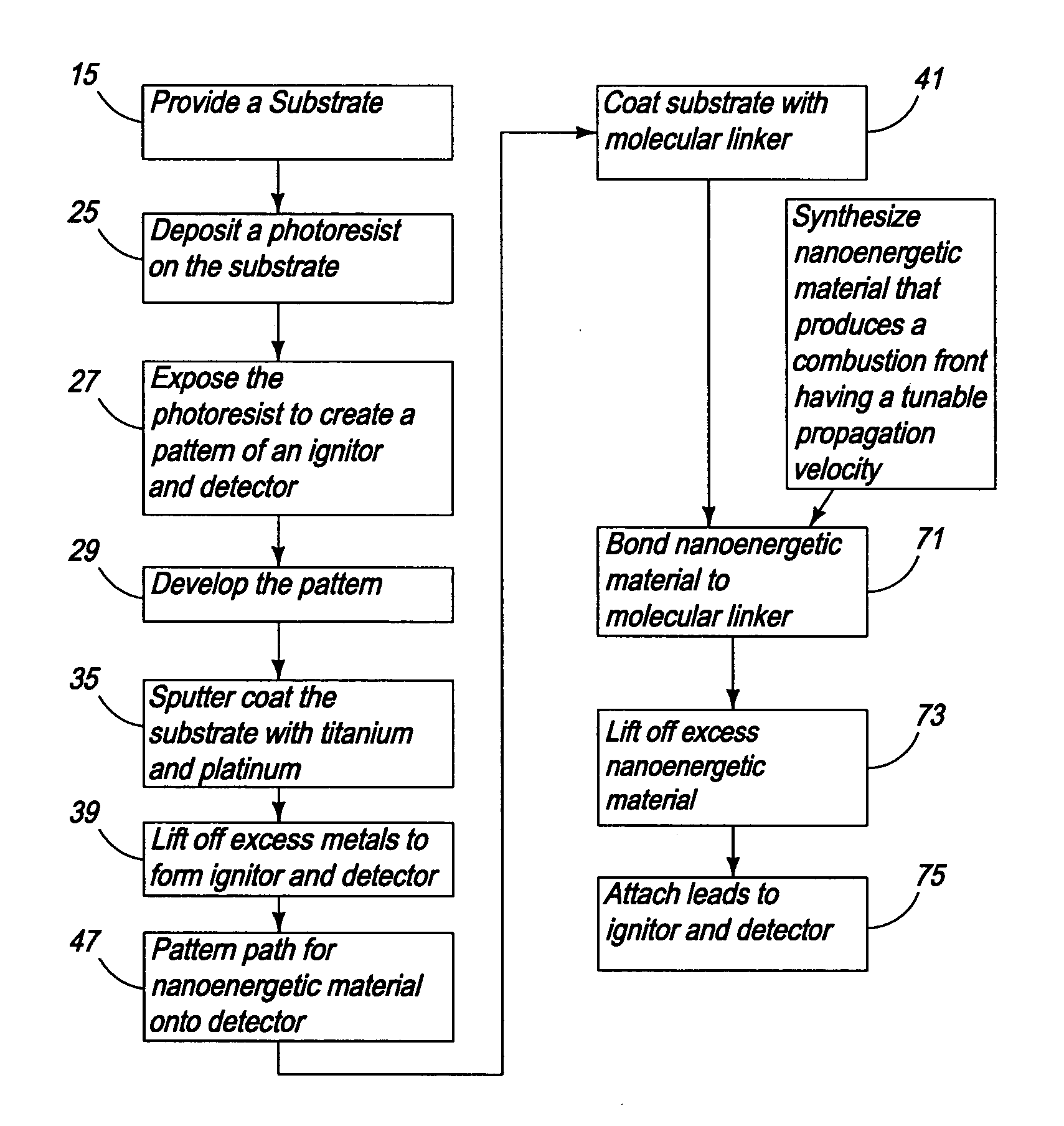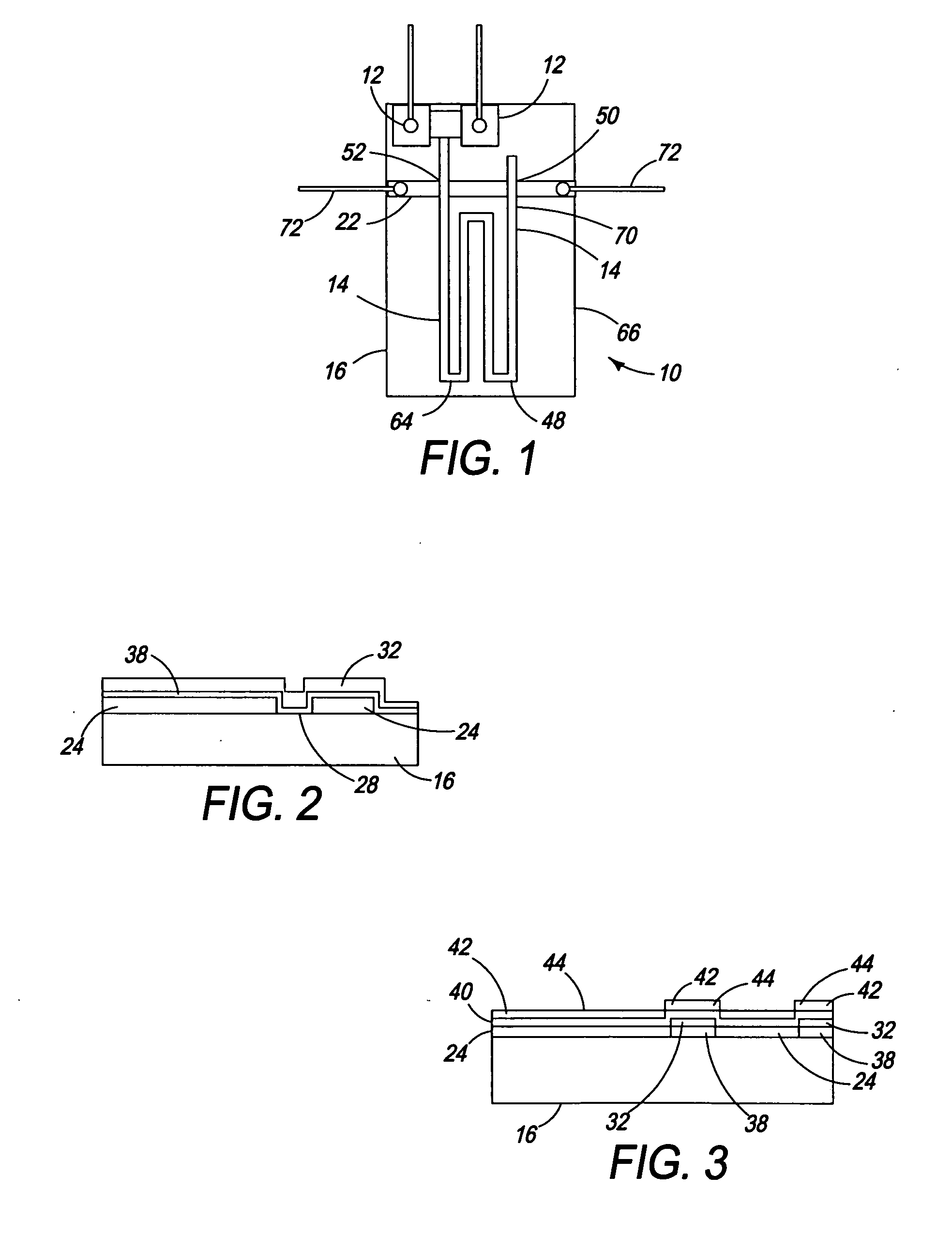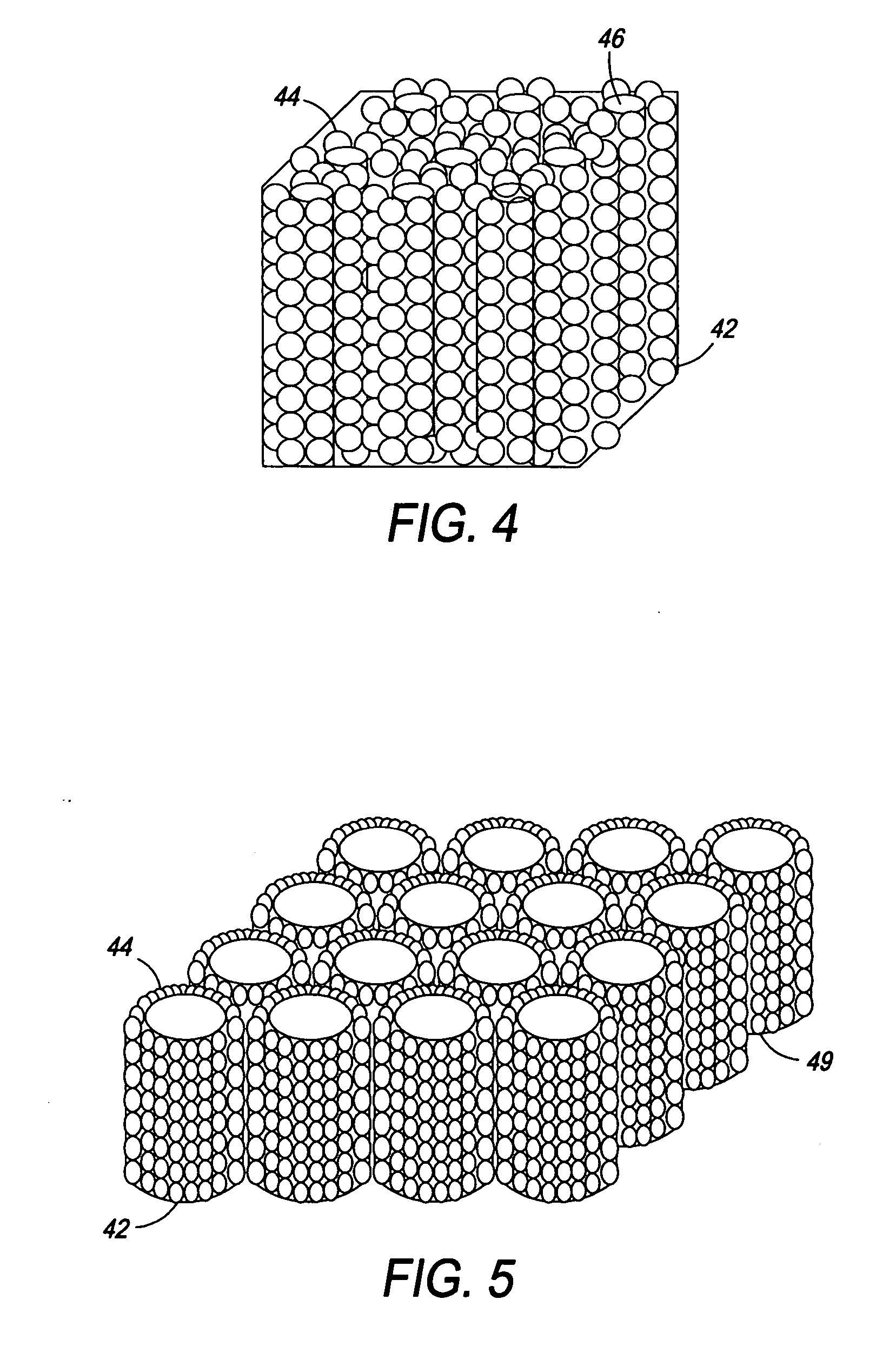On-chip igniter and method of manufacture
a technology of on-chip igniter and manufacturing method, which is applied in the direction of solid-state devices, weapons, semiconductor devices, etc., can solve the problems of large setup and cost, high cost, and high cost of available testing methods, and achieves small amount of combustible materials on any single device, easy and safe handling, and reasonable cost
- Summary
- Abstract
- Description
- Claims
- Application Information
AI Technical Summary
Benefits of technology
Problems solved by technology
Method used
Image
Examples
example 1
[0060] A diagnostic device was made on a glass substrate measuring 1 inch×3 inches (2.5 cm×7.5 cm). The glass was 0.035 inches thick. It was cleansed for ten minutes with Piranha solution consisting of sulfuric acid (H2SO4, 98%) and hydrogen peroxide (H2O2) in a 3:1 ratio. Residual acids and sulfates were removed from the substrate surface by rinsing the substrate in running distilled water. The cleaned substrate was dried at 105° C. for 15 minutes.
[0061] Shipley S1813 positive photoresist was spun onto the cleaned glass substrate at 650 rpm for 30 seconds and then oven dried at 110° C. for 7-8 minutes. A black and white transparency mask was printed at a resolution of 3200×3200 dots per inch with patterns for a heater and a time varying resistor. The substrate was then exposed to light in a Kienstein exposure tool for 105 seconds. Passage of light through the clear areas of the transparency allowed the photoresist to de-bond. The de-bonded resist was wet-etched from the substrate ...
example 2
[0066] Additional diagnostic apparatuses were made according to the method of Example 1, using different nanoenergetic materials. Bismuth oxide (Bi2O3) and aluminum nanoparticles were combined in a ratio of 70% oxidizer and 30% fuel, with a total weight of 1.37 g. The powders were dispersed in 5 mL of 2-propanol.
[0067] The flame propagation rate of the various nanoenergetic materials made by the process of Example 1 were measured using on-chip method. The chip was fabricated with the heater at one end and the time varying resistor at the other end by sputter coating the platinum film. This chip was coated with uniformly thick layer of nanoenergetic material and the chip was connected across a voltage divider circuit to measure the voltage drop across the time varying resistor detector film. The on-chip heater film was powered by a voltage supply which heated up the energetic material to its ignition point. Current of 2-3 Amps was supplied to the heater when ignition switch was togg...
example 3
[0068] A multi-point Initiator apparatus was made using a microfabrication technique. Borofloat glass microscopic slides from (1×3 in.) were used as the substrate, which were cleaned using the procedure described in Example 1. The substrates were then shadow masked with aluminum (Al) foil in a square pattern of 5×5 mm. After masking the substrates, the sputtering process was performed. First, an interface layer, for adhesion promotion, of Ti was deposited about 10 nm thick. The sputtering system used for the prototypes called for sputtering the Ti at 150 mA for 1 min 50 sec to achieve the desired thickness. Then, the Pt film, about 650 nm thick, was deposited by sputtering 5 cycles at 90 mA for a total time of about 20 min (cycle time of 4 min each). This sputter-coating procedure produced about 130 nm thick films per cycle.
[0069] Once the films deposited, the shadow-mask was removed, and discarded. These glass substrates with a thin-film of Ti and Pt-layers were annealed in an ove...
PUM
 Login to View More
Login to View More Abstract
Description
Claims
Application Information
 Login to View More
Login to View More - R&D
- Intellectual Property
- Life Sciences
- Materials
- Tech Scout
- Unparalleled Data Quality
- Higher Quality Content
- 60% Fewer Hallucinations
Browse by: Latest US Patents, China's latest patents, Technical Efficacy Thesaurus, Application Domain, Technology Topic, Popular Technical Reports.
© 2025 PatSnap. All rights reserved.Legal|Privacy policy|Modern Slavery Act Transparency Statement|Sitemap|About US| Contact US: help@patsnap.com



